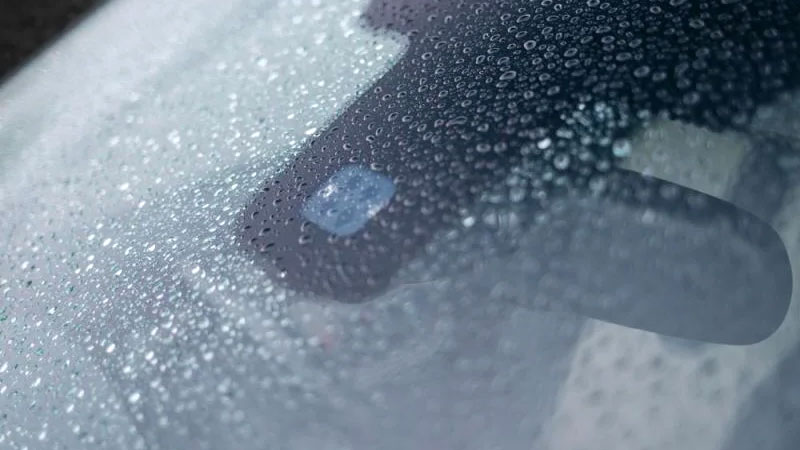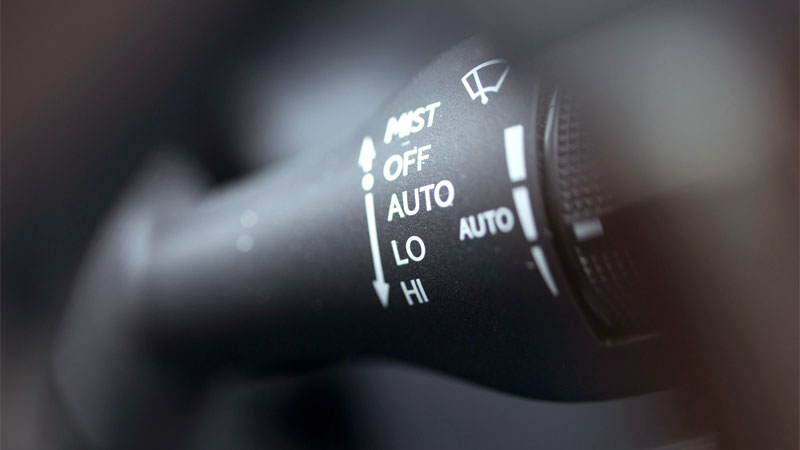Many breakthrough inventions have made cars easier to drive, safer, and more reliable. Seatbelts and airbags are some of the greatest of these safety innovations, but the automatic rain-sensing wipers are a great safety invention too. So, how do rain-sensing wipers work?
Rain-sensing wipers work with a rain sensor behind the windshield’s rearview mirror. The sensor emits infrared light onto the glass, which is reflected back to the sensor. The less infrared light reflected, the more water is on the glass, which triggers the ECU to turn on the wipers.
Read on to discover how rain-sensing wipers work, why they are so important, how to activate or deactivate them, and more.
The Reason For Rain-Sensing Wipers
Many car accidents are attributed to wet, damp, and low-visibility conditions. Investigators noticed a trend as far back as 1930: drivers did not use their headlights and wipers in these conditions. In earlier models, the wipers were operated manually or only had a single speed setting, and the headlights were not up to today’s standards.
Automakers have tried for decades to simplify the task of automatically switching on and controlling a vehicle’s windshield wiper. Some companies attempted to eliminate the need for wipers. In contrast, others used optical wires to detect the vibrations of the raindrops hitting the windshield.
So from vibrating windows to hydrophobic chemicals and other weird inventions that did not pass the consumer test, the motor vehicle industry had a problem.
That was until an Australian inventor, Raymond J. Noack, introduced the world to his rain-sensing wiper system in 1978. The system used sensors to detect water drops on the windshield. The system would turn the wipers and headlights on when a drop of moisture was detected. If the drops did not dissipate and stayed in the same spot, it would turn the windshield washer on to rinse the window.
The Science Behind Rain-Sensing Wipers

Rain-sensing wipers have come a long way since their inception in 1978. Today, they are a crucial tool for any motorist driving in inclement weather. While several companies manufacture versions of this technology, they all rely on the same basic principle.
At the heart of the rain-sensing wiper system is the sensor. These infrared sensors emit a beam of light onto the windshield and detect how much of the light is reflected back. When water or debris is present on the windshield, less infrared light is reflected back to the sensor, triggering the wipers to activate.
But these sensors are not just accurate – they’re also smart. They can detect the intensity of the rain and adjust the wiper speed accordingly, ensuring that your windshield is always clear and your visibility is never compromised.
And the best part? These sensors are discreetly located behind the rearview mirror, or can even integrate with the mirror to form a sleek, single unit.
How Rain-Sensing Wipers Work
Picture this: you’re cruising down the highway, enjoying a leisurely drive, when suddenly, raindrops start to appear on your windshield. But before you even have time to react, your car’s rain sensors kick into gear.
These sensors are no ordinary gadgets – they’re high-tech tools that relay information to your car’s computer module in real-time. The computer uses this data to determine the correct speed setting for your wipers and activates them accordingly. And that’s not all – if the rain intensifies and visibility begins to fade, the computer will even turn on your headlights to ensure that you can see the road ahead.
But what goes into this lightning-fast decision-making process? The vehicle’s computer module takes into account a multitude of factors, including the size and frequency of the water droplets, the speed at which you’re traveling, and the outside LUX (level of light).
All of this is calculated in less than a tenth of a second to provide you with the best possible assistance. So the next time you’re driving in the rain, take comfort in knowing that your car’s rain sensors have got your back.
Are Rain-Sensing Wipers Becoming The Norm?
The driving experience has undergone a major transformation in recent years. With more traffic, congested highways, and an increasing number of road obstacles, drivers have more to contend with than ever before. And let’s face it – most drivers have a smartphone, which only adds to the already overwhelming workload.
But when bad weather strikes, the situation becomes even more challenging. Impaired vision and hearing make it difficult to navigate the roads, and drivers must concentrate on avoiding collisions with other cars. That’s where rain-sensing wipers come in.
At first, these wipers may have seemed like a gimmicky sales tactic. But research has shown that they are a valuable safety feature that can prevent accidents. By automating the process of selecting wiper speed, headlights, and even spraying washer fluid, drivers can focus on the task at hand – driving safely and staying alert to potential hazards.
It’s no wonder, then, that many car manufacturers are now installing rain-sensing wipers as standard options. As driving conditions continue to evolve, these innovative tools are becoming the norm – and for good reason.
Related: Wiper Fluid Isn’t Spraying? (Common Causes)
Will a Damaged Windshield Affect Rain-Sensing Wipers?
We’ve all been there – a small chip or crack appears on our windshield seemingly out of nowhere. But what does this mean for our trusty rain sensors?
The good news is that minor damage to your windshield should not affect the sensors. But if the damage is severe – think multiple cracks or large chips – the sensors may not function as well as they should.
If you find yourself in need of a windshield replacement, it’s important to choose a professional fitment company to do the job. These experts will ensure that the sensor is properly calibrated and functioning correctly with the new windshield. Using an aftermarket windshield may affect the way the sensors work, as aftermarket options may have a different thickness and reflection than the OEM windshield.
And what about window tinting? If you must have your windshield tinted, make sure to have the car manufacturers adjust the rain sensor settings accordingly. This adjustment will ensure that the sensors function correctly when you need them most. So the next time you notice a chip or crack on your windshield, rest assured that with the right care and attention, your rain sensors will continue to work like a charm.
Can Rain-Sensing Wipers Be Turned Off?
Rain-sensing wipers are a game-changer when it comes to safety and convenience on the road. But what if you find yourself in a situation where you don’t want them activated?
No need to worry – these innovative wipers can easily be turned off. Depending on the make and model of your car, you may be able to turn them off using the central infotainment screen or the stalk on the steering column. Check your owner’s manual for the correct method of deactivating your automatic wipers for your vehicle.
So whether you’re driving through a car wash, not enough moisture is causing them to make too much noise, or just prefer to control your wipers manually, you do have the power to turn off your rain-sensing wipers whenever you need to.


